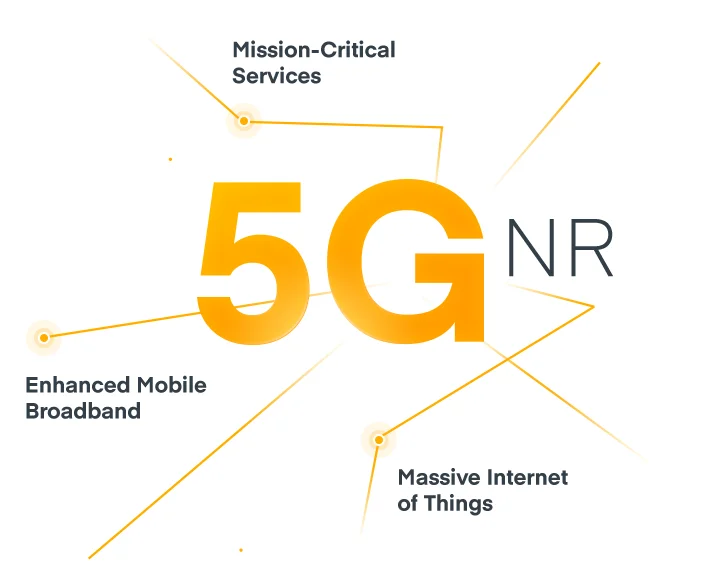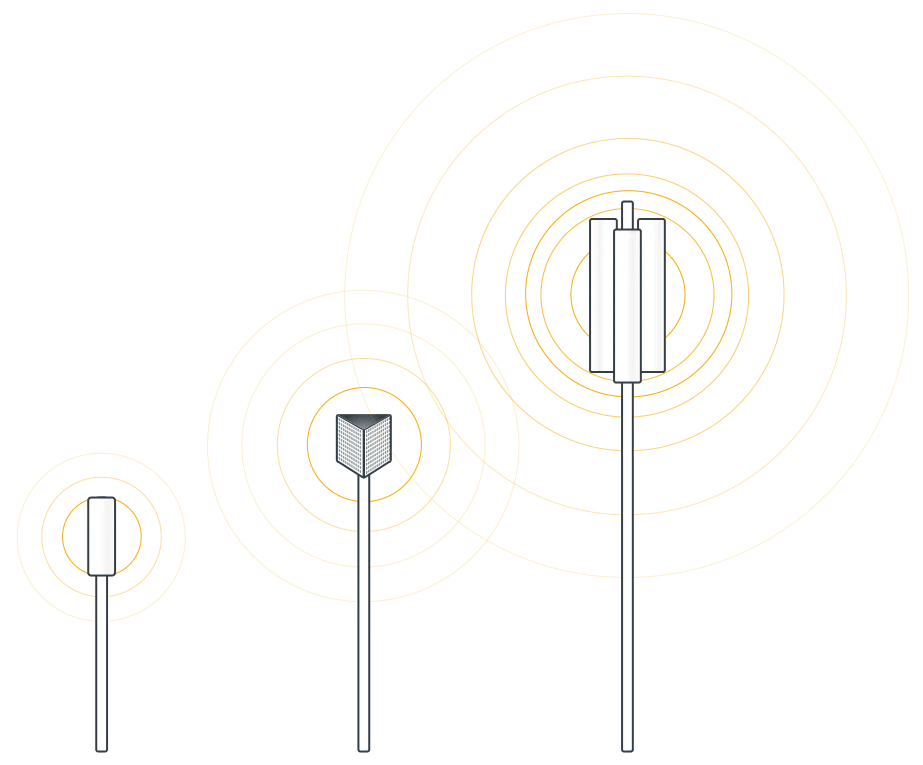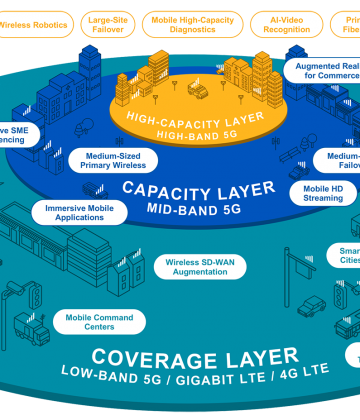5G Spectrum Layers
Unlike prior wireless generations, 5G adds two spectrum layers to the current layer. Each category of 5G spectrum has tradeoffs between propagation and performance. For decades cellular communications have occurred in what is now being called the “coverage layer.” The coverage layer operates in sub-2 GHz spectrum, providing great propagation but comparable low data capacity.
The first of the two new layers introduced with 5G is the “high-capacity layer,” also called high-band or mmWave, operates in the 24 GHz + spectrum range. As the name denotes, this layer promises to deliver between 1 and 3 Gbps speeds when fully mature. Because of its low propagation characteristics, this layer will take some time to fully build out.
The second of the two new layers introduced with 5G is the “capacity layer,” or mid-band, which operates in the 2 GHz to 7 GHz spectrum range. As many believe this is the ideal layer, most countries have started rolling out in this spectrum layer. In the U.S., T-Mobile offered 5G mid-band spectrum network (2.5 GHz) in 2020 and Verizon and AT&T began offering mid-band services based on their purchases of spectrum (3.7-3.98 GHz) known as C-Band.
Business Implication: When organizations buy edge networking solutions today, they need to plan the 5G technology needs of tomorrow. The wireless broadband routers and adapters are those that can support multiple spectrum layers and use cases.


